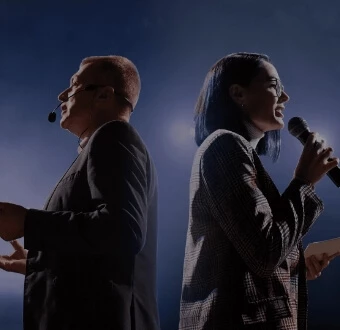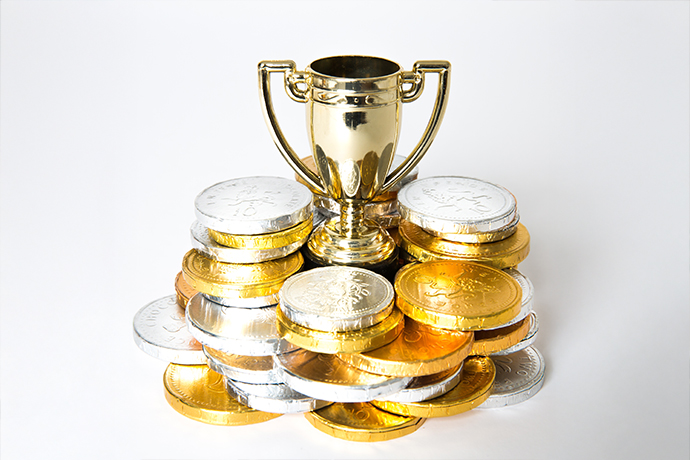 SPEAKERS
SPEAKERS
 TOPICS
TOPICS
One way to keep your employees happy and productive is by making them feel valued. Learn which strategy works better to keep workers happy; recognition or rewards.

Workers play an invaluable role in the success of any organisation. The effort they put into their assigned roles determines if your organisation will move forward or stagnate. Therefore, employers must strive to hire quality talent and retain the ones they already have; this goal is only achievable by keeping the workers happy and making them feel seen.
However, many HR heads are always in a dilemma when determining which method is more effective in keeping employees happy; recognition vs rewards. While both approaches aim to boost workers’ morale, their effectiveness differs. When used correctly, these strategies can significantly strengthen employee engagement, enhance teamwork, and create a more positive workplace culture.

Recognition simply means acknowledging someone’s effort or behaviour. In organisations, this act is shown through informal and non-monetary ways, with a focus on making employees feel valued for their contributions. For example, the CEO may make a shout-out to a top-performing employee during a meeting or via a company email. The manager could also send a personalised note to the intended individual.
Recognition can, therefore, be termed as personal and emotional; it connects the employee’s behaviour to the company’s values and often leads to a greater sense of purpose and fulfilment. When distinguishing recognition vs. appreciation, the two terms are often used interchangeably, but recognition typically relates to what someone has done, while appreciation reflects who they are.
Award-winning speakers like Alice Fraser will agree that companies that prioritise recognition often see improvements in retention, morale, and even creativity. When employees are acknowledged regularly, they’re more likely to invest emotionally in their work and the success of their team.
A reward is a tangible incentive or prize that’s is offered to a person after a specific achievement. In organizations, rewards may be given to the top-performing employees, the most disciplined, or the most improved. These prizes may be in form of a trophy, gift voucher, bonus, or a promotion. That means that rewards are simply transactional, and are given at certain set periods.
While rewards might not always appeal to employees’ emotional needs, they offer motivation for reaching goals. When clearly aligned with performance expectations, they encourage productivity and help maintain momentum within teams. A structured rewards system can be particularly effective in competitive or target-driven roles. However, when used alone without genuine recognition, rewards can sometimes feel impersonal or expected.

The benefits of combining recognition and rewards are well-documented. While recognition fosters emotional connection and loyalty, rewards drive focus and tangible results.
First, recognition makes a worker feel respected and valued. It boosts self-esteem and reinforces a sense of belonging. People are more likely to stay with a company where they feel appreciated, leading to lower turnover and higher morale. This emotional investment directly supports teamwork, and builds a stronger employee engagement.
On the other hand, rewards serve as clear incentives. They encourage employees to hit targets and can help reinforce specific company goals. A well-designed reward structure can create healthy competition, improve individual performance, and make success more visible.
Used together, the benefits of rewards and recognition multiply. For instance, completing a big project might earn a bonus (reward), but also a team-wide mention (recognition). This dual approach satisfies both emotional and practical motivators, resulting in a more motivated and committed workforce.
So, when comparing recognition vs. rewards, which is more effective for employee happiness? The answer lies in understanding what drives lasting satisfaction. Recognition often proves more powerful in the long term. While rewards can give a temporary boost, consistent recognition builds emotional loyalty and strengthens team cohesion. Employees who feel genuinely recognised are more likely to be engaged, creative, and resilient.
That said, rewards still play an important role, especially in roles with measurable KPIs or sales targets. They help keep high-performers motivated and provide a clear return for effort. The key is not to choose one over the other but to use both intentionally. For most companies, recognition should form the foundation of a strong culture, with rewards used strategically to reinforce major accomplishments or milestones.
Inspiring speaker Cassandra Stavrou was awarded for her contribution in the food industry, and she understands that a heartfelt thank-you, when paired with the occasional tangible reward, is a formula that fosters both productivity and happiness.

Finding the right balance between recognition vs. rewards is essential for building a high-performing and satisfied workforce. Overemphasizing rewards can make motivation feel transactional. Overreliance on recognition alone might not fully motivate performance in results-driven roles.
To strike the right balance, create a consistent rewards and recognition strategy that aligns with your company’s values and goals. Recognize behaviours that reflect your culture regularly and use rewards to mark big wins or sustained performance. Keep communication open so employees understand what to expect and feel that efforts at every level are valued.
You may also seek guidance from speakers like Chris Harvey to encourage your workers on peer-to-peer recognition. This approach deepens connections among employees and promotes organic positivity across departments. Small actions, such as saying thank you to a colleague or celebrating small wins, can make a big difference when done sincerely and consistently.
Technology can also streamline this process. Recognition platforms allow managers and employees to give real-time feedback and track both recognition and rewards over time. When well implemented, this builds a transparent, inclusive, and motivating environment that improves workplace culture across the board.
There is no one-size-fits-all answer to which one is better between recognition and awards for employees. The effectiveness depends on how well you strategise. For instance, if you want to tap into the workers’ emotional needs, recognition is certainly the way to go. It makes the workers feel seen, heard, and valued. Rewards offer a more concrete return for effort and can reinforce performance goals.
In contrast, if you are looking to increase employee engagement, promote teamwork, and improve overall workplace culture, both recognition and rewards should be used together. A thank-you note after a job well done may seem small, but when paired with thoughtful rewards and clear expectations, it becomes part of a culture where employees truly thrive.
To take these strategies even further, consider inviting a speaker like Bruce Daisly with real-world experience in leadership to inspire your team. Speaker Agency will connect you with well-known and trusted speakers to elevate your workers.